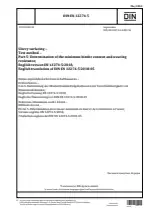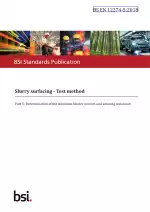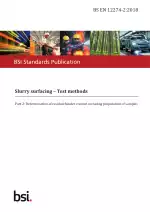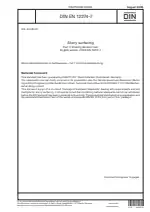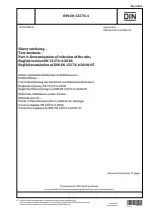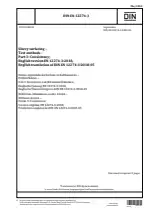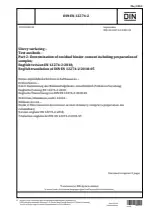Slurry Surfacing Test Method - Part 5: Determination of the Minimum Binder Content and Wearing Resistance
Also Known As:
The DIN EN 12274-5 standard outlines a specific procedure for determining the minimum binder content and wearing resistance of slurry surfacing mixtures. Slurry surfacing is a type of coating applied to road surfaces, typically consisting of a mixture of aggregates, binders, and additives.
The standard focuses on two key aspects of slurry surfacing mixtures. Firstly, it provides a method for determining the minimum binder content required for the mixture. The binder is a crucial component of the slurry surfacing, as it binds the aggregates together and provides adhesion to the road surface. The determination of the minimum binder content helps ensure the proper performance and durability of the slurry surfacing.
Secondly, the standard addresses the resistance to wear of the slurry surfacing under wet track abrasion conditions. This aspect is important as slurry surfacing is subjected to traffic and weather conditions, which can cause wear over time. The test procedure outlined in the standard measures the wearing resistance of the slurry surfacing, allowing for the evaluation of its durability and performance.
| Descriptors | Abrasion, Asphalt paving, Asphalts, Binding agents, Bitumens, Cold laying, Consistency, Construction materials, Content, Definitions, Humidity, Materials to be mixed, Mineral aggregates, Pavements (roads), Road superstructure, Sludge, Surface protective coat, Testing, Testing devices, Wear, Checking equipment |
| ICS Codes | 93.080.20 - Road construction materials |
| Language(s) | English |
| File Size | 2.0 MB |

